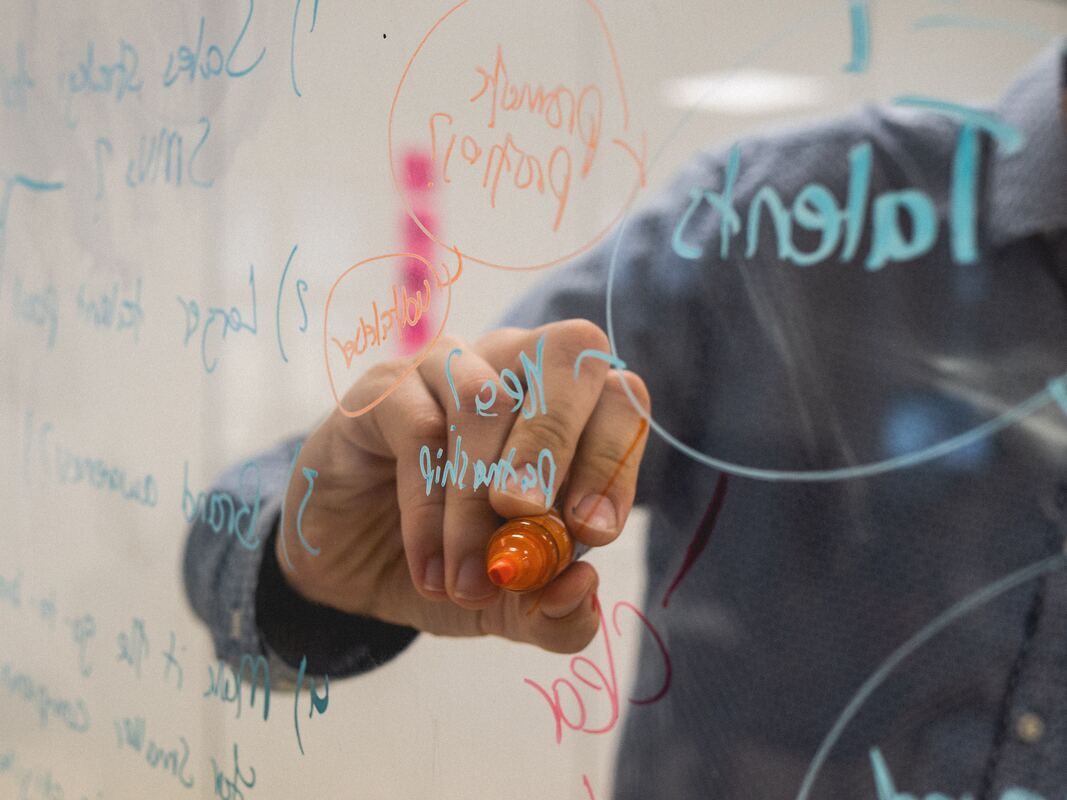|
Are your meetings characterized by innovation, collaboration, optimism, and experimentation? Would you like to see more of this on your teams and in your work? If so, let me (re)introduce you to Design Thinking! Design thinking is an alternative to conventional problem-solving practices. The process has three main goals – to open up the creative process (inspiration), to develop lots of ideas (ideation), and to build something useful for the world (implementation) - and empathy is at the foundation of each of these goals. Looking to build this into your innovation model as an organization? Read on…
My favorite resource on Design Thinking is the Design Thinking Bootleg from the d.school at Stanford University. This resources takes us through a Design Thinking process, which consists of five phases: Empathize, Define, Ideate, Prototype and Test. As with every good problem-solving method, this process begins by reconsidering the presenting problem. In this method, we define the problem through empathy – what is the clear, compelling human need that we are seeking to address? And how we do this empathetically is by spending time understand the problem by talking with and considering it with others, though inquiry and dialogue. If you want an excellent illustration of Design Thinking in Action, watch this throwback video on the IDEO: Shopping Cart Design Process. Ideation is just what it sounds like, the process of generating ideas, and the goal is to generate as many as possible from as many different perspectives as possible. With this broad view of possibilities in mind, then the process becomes one of narrowing in on a leading idea, and furthermore, making the idea into something tangible that people can interact with and learn from – a prototype. With a manifestation of the idea to engage with, the group (because design thinking is a team sport), then tests their idea and refines it, iterating and improving continuously. One great activity to do with groups to illustrate this process is the Marshmallow Challenge –and Tom Wujec, a titan of innovation and problem solving, helps us make sense of the exercise in his fantastic Ted Talk: Build a Tower, Build a Team. So what does this have to do with meetings? Here’s a quick agenda for a one-hour problem solving meeting: Introduce Design Thinking, then spend 15 minutes on Discovery (Partner Interviews), 15 minutes on Ideation (Small Group Brainstorming), 15 minutes on Prototyping (pick an idea and sketch it out), and 15 minutes on Testing (getting feedback and considering next steps). Looking to innovate even faster? Consider the 15-minute meeting based in the SCRUM method. Design thinking and SCRUM are methods to inspire, ideate and implement great ideas in our workplaces. Wouldn't that be i-deal?
0 Comments
Leave a Reply. |

 RSS Feed
RSS Feed
